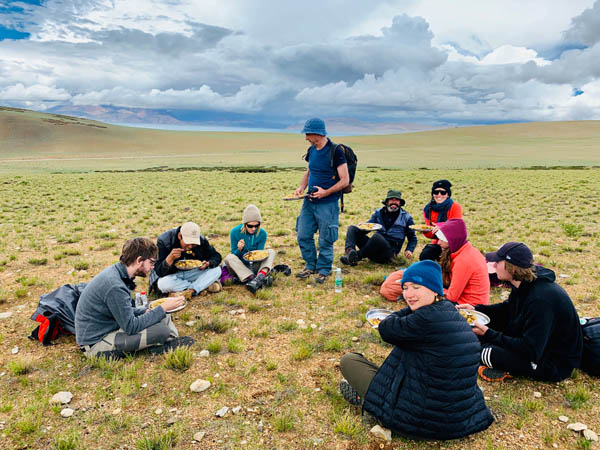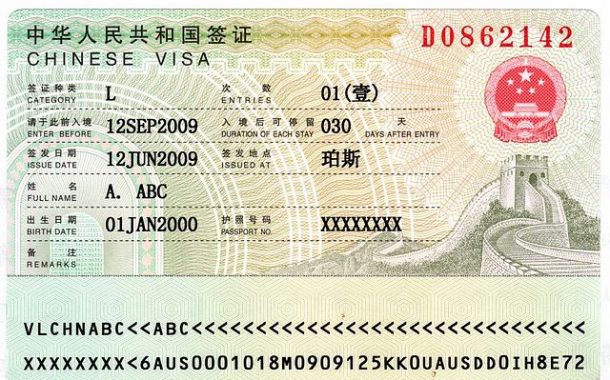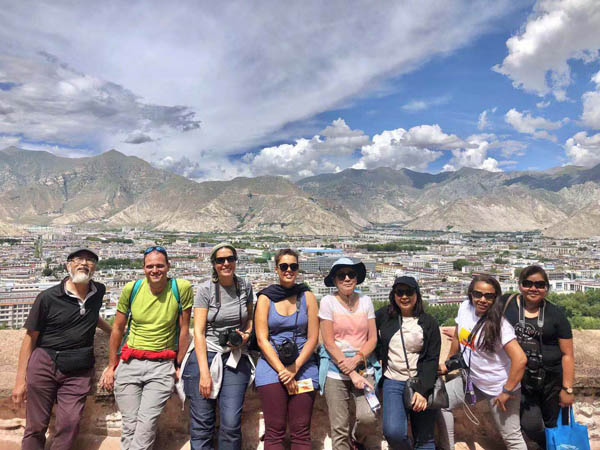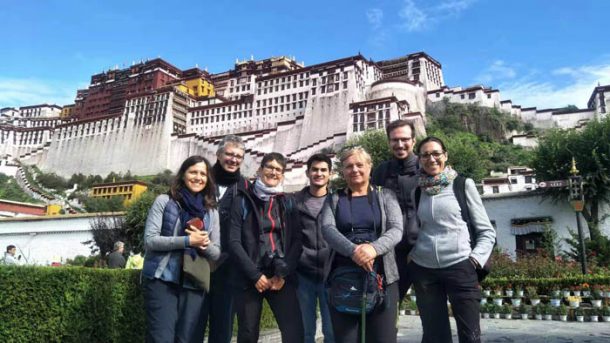How to get a Chinese Entry Visa to visit Tibet
Unlike traveling to most countries in Asia, traveling to Tibet is unlike anywhere else you have ever been. Not only does this ancient Buddhist land have some of the highest mountains in the world, amazing landscapes and scenery, and more lakes than you would have thought possible, but it is easily accessed from mainland China with the right permits and passes. However, contrary to what some people are led to believe, the Chinese Entry Visa is not enough to enable you to travel to Tibet from mainland China. Other documents are required, as well as other requirements for taking a tour on the plateau at the Roof of the World.

Table of Contents
How to Apply for a Chinese Visa
Applying for the Chinese Entry Visa depends on where you are residing, as rules on the application process can vary from country to country. The only thing that is sure is that all visa applications must be processed before traveling to China, as there is no Visa on Arrival available. When applying for the visa, it is imperative that you do not mention that you will be traveling to Tibet, as this will cause problems with the application.
There are three main ways in which to apply for a Chinese Entry Visa: in person at the Embassy, by registered mail, and through the Chinese Visa Application Service Center (CVASC). The method used depends on your country of origin or residence, and a simple Google search will provide you with the Chinese Embassy website address for your home or resident country, which normally includes details on the application process for your country. Applications must be made to the Embassy of the People’s Republic of China in your home or resident country.

Visa Requirements
All visa applications have the same requirements, regardless of the method of application, which includes:
- Valid Passport – An original signed passport with at least six months’ validity remaining, blank visa pages, and a photocopy of the data page and photo page (if separate).
- Visa Application Form and Photo – One completed Visa Application Form with a photo on glossy photo paper glued onto the form. Your photo must meet the requirements listed on the Embassy website. Visa Form V.2013 is available from the Embassy website for download.
- Proof of legal stay in the resident country – If you are not a citizen of the country you are applying from, you must provide original and photocopy proof of your eligibility to stay in that country.
- Proof of itinerary, onward travel booking, and hotel reservations in China – You must provide documents that show your itinerary whilst in China (not including Tibet), a booking record of a round-trip flight, and a proof of your hotel reservations at the places you intend to travel to according to your submitted itinerary.
- Payment – You are required to include the payment for the amount of the visa, dependent on the country of origin, in the local currency, and in the payment method laid out by the embassy in your home country. The Chinese Embassy normally only accepts payment in money order, cashier’s check, or Credit Card (Visa or MasterCard only). Cash and personal checks are not accepted for any form of visa payment, including personal visits. All money orders and cashier’s checks must be made payable to the “Chinese Embassy”.

Personal Applications at the Embassy
Personal applications require you to visit the embassy in your home country with all the required documents completed in full with no errors, erasures, or corrections. Once you have made the application, you will be given a date for collection, when you will be able to go back to the embassy to collect your passport with the visa stamp already completed. The good thing about a personal visit is that the embassy will check the documents prior to accepting the application and taking the fee, so if you have anything missing or incorrect, it is easier to correct things.
Postal Applications
For nationals of certain countries, including the United States, postal applications are permitted, using the national registered mail carrier of the country in question. In the United States, this is the United States Postal Service (USPS), and courier-delivered packages for applications will be refused acceptance and turned away. Your application must contain all of the above documentary requirements, as well as the relevant fee, which can be found on the website, in the correct payment method

Chinese Visa Application Service Center (CVASC)
The CVASC is a service that has been introduced to make it easier to get a visa from an embassy in certain countries, which includes the United Kingdom, Canada, South Africa, Japan, Australia, and a number of other countries. You can find the details of all the countries that are required to make their applications through their local CVASC at https://www.visaforchina.org/.
Applications made through the CVASC must be done in person at one of the centers listed on the website next to each country’s flag. All of the above documentary requirements are still the same, and you need to submit the documents to the center for assessment and completion. You should also apply for the visa through the CVASC at least one month in advance of your intended visit to China, but no earlier than three months in advance. You will need to make an appointment for the visa submission, and you will submit your documents over the counter, where your fingerprints will be captured. If your application is accepted, you will then pay the fee and receive the payment receipt. Certain CVASC’s in certain countries now accept cash payments over the counter and the use of debit cards.
The date for collection of the visa is listed on the pick-up form you will be given on application, and you need to be at the center as early as possible for collection, as there may be a waiting period. Visas are issued to applicants in the order that you arrive at the center on the day of collection. It is possible to get the visa returned by mail in certain countries, and you will need to provide a self-addressed, pre-paid, registered-mail envelope for the return.
How much is the Chinese Entry Visa?
The cost of the Chinese Entry Visa does depend on your country of origin, and some countries are very expensive, while others are relatively low-cost. The main countries and costs for Chinese Entry Visas, according to the latest data from the Embassy of the People’s Republic of China, are:
| Country | Single Entry | Multiple Entry |
| Australia * | AUD 109.50 | AUD 139.50 |
| Brazil | BRL 460 | BRL 460 |
| Canada * | CAD 142 | CAD 142 |
| France * | EUR 126 | EUR 126 |
| Germany * | EUR 125.45 | EUR 125.45 |
| India * | INR 5,552 | INR 7,502 |
| Ireland | EUR 40 | EUR 60 |
| Italy * | EUR 127.10 | EUR 127.10 |
| Japan * | JPY 8,000 | JPY 10,000 |
| Netherlands * | EUR 126.55 | EUR 126.55 |
| New Zealand | NZD 140 | NZD 210 |
| Mexico | MXN 730 | MXN 1,090 |
| Poland | PLN 220 | PLN 220 |
| Russia | SUR 3,300 | SUR 6,600 |
| Singapore * | SGD 85 | SGD 95 |
| Spain * | EUR 126.55 | EUR 126.55 |
| United Kingdom * | GBP 151 | GBP 151 |
| United States of America | USD 140 | USD 140 |
| Countries marked with an asterisk (*) are required to apply for the Chinese Entry Visa via the local Chinese Visa Application Service Center (CVASC). Cost includes the CVASC fees. |
Recent Posts
The Ultimate Guide to Tibet Tours, Travel, and Trekking Adventures
How to Explore Tibetan Culture
Exploring Lhasa:The Heart of Tibet
All Categories
- About Tibet
- book a Tibet tour
- Buddhism Practice
- Budget Tour
- China-Tibet Train
- Customized Tibet tour
- Historical Sites
- Hot Springs in Tibet
- News
- Photography in Tibet
- Tibet attraction
- Tibet Group Visa
- Tibet Motorcycle Tour
- Tibet Small Group Tours
- Tibet Tours and Tibetan Tour Guide
- Tibet Train
- Tibet Travel FAQs
- Tibet Travel Information
- Tibet Travel News
- Tibet Travel Permit Update
- Tibet Travel Prices Rises
- Tibet Trek
- Tibet Trekking Tour
- Tibet weather and climate
- Tibet Wildlife animals
- Tibet Winter Tour
- Tibetan Buddhism
- Tibetan Cultural Features
- Tibetan Culture and Poeple
- Tibetan Festivals
- What to see in Tibet



